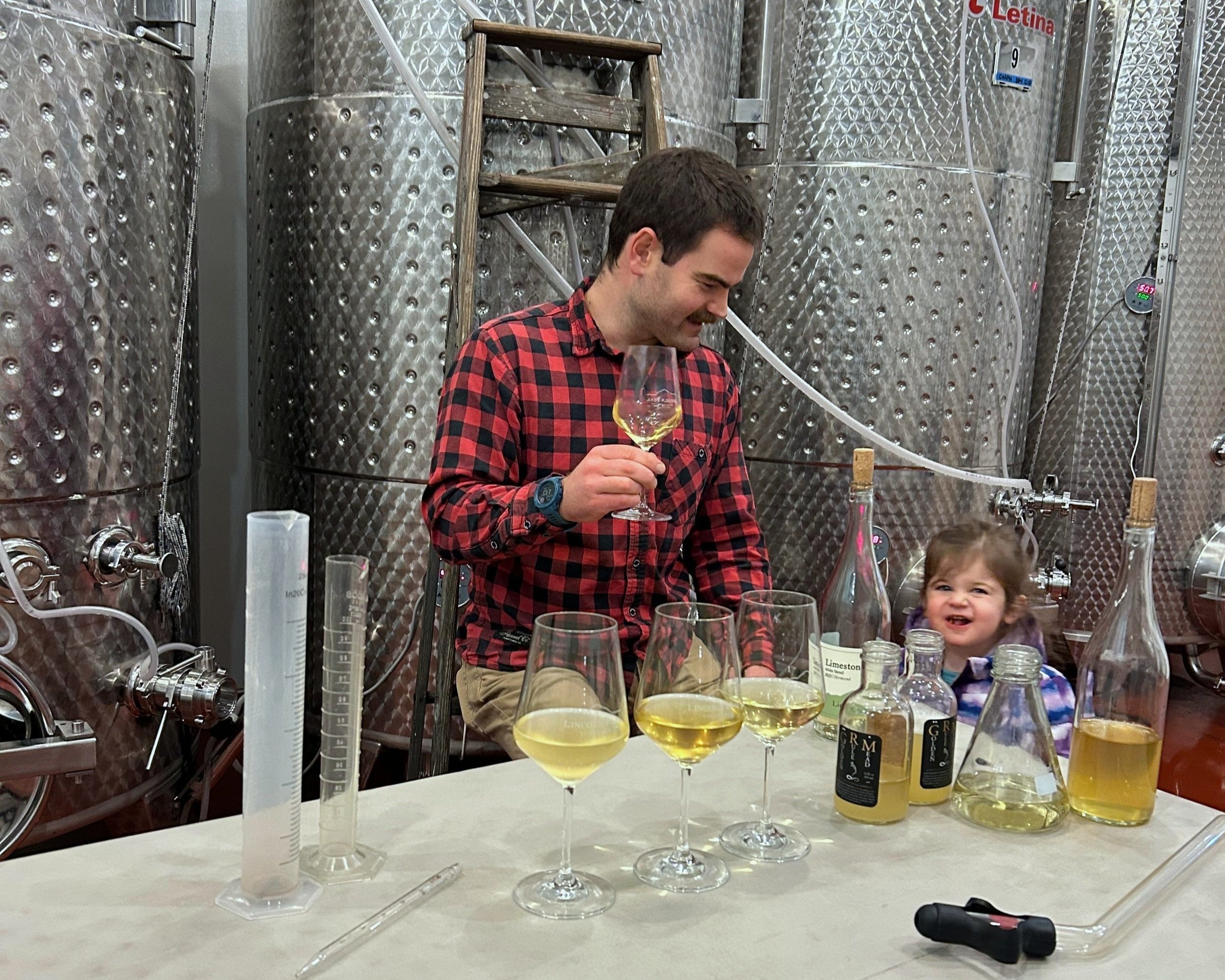New Year, New Vine
Snow has blanketed the vineyard and so far it’s been a beautiful, vintage Vermont winter. The sustained cold weather means the vines are now fully dormant, quietly recovering from the last growing season and eagerly preparing for the next. Dormancy also means that it’s time for one our favorite vineyard tasks of the year: pruning.
Pruning is like pressing a vine’s reset button, shedding the wood that laboriously produced last year’s harvest and making room for new growth. We may remove up to 90% of the vine’s wood every year, each cut strategically placed to maximize the plant’s potential and longevity. Nothing we do in the vineyard has a bigger, more lasting impact on the vine’s ability to fully and sustainably ripen fruit than pruning.
It’s not a glamorous process - maneuvering pruners with hands incapacitated by bulky gloves, unwrapping impossibly strong tendrils, and trying to avoid getting whipped in the frozen face by a rogue cane - but each vine is a unique and fascinating puzzle.
Without foliage to block our view, we can clearly see the vine’s structure and the clues it left us from the growing season. These clues - the length and thickness of a cane, the presence of a scar or stretch mark, the spacing between buds - help us decide what to cut away and what to retain. In this way, we can affect the shape of the vine, improve its immune system by redirecting sap flow away from damaged or diseased wood, encourage growth of a new trunk, and balance its vegetative (shoots, leaves, etc.) and reproductive (grapes!) potential.
Pruning is cold, hard work but its methodical nature and the quiet of winter make it a time for reflection, sharing stories, planning, catching up on podcasts, and discovering new music. The tracks in the snow remind us of the wildlife that share this land with us. And we stand in reverence of the vines, masters of regeneration and resilience.














